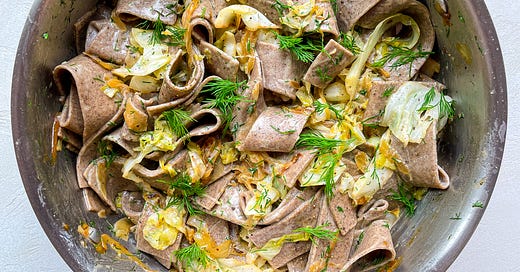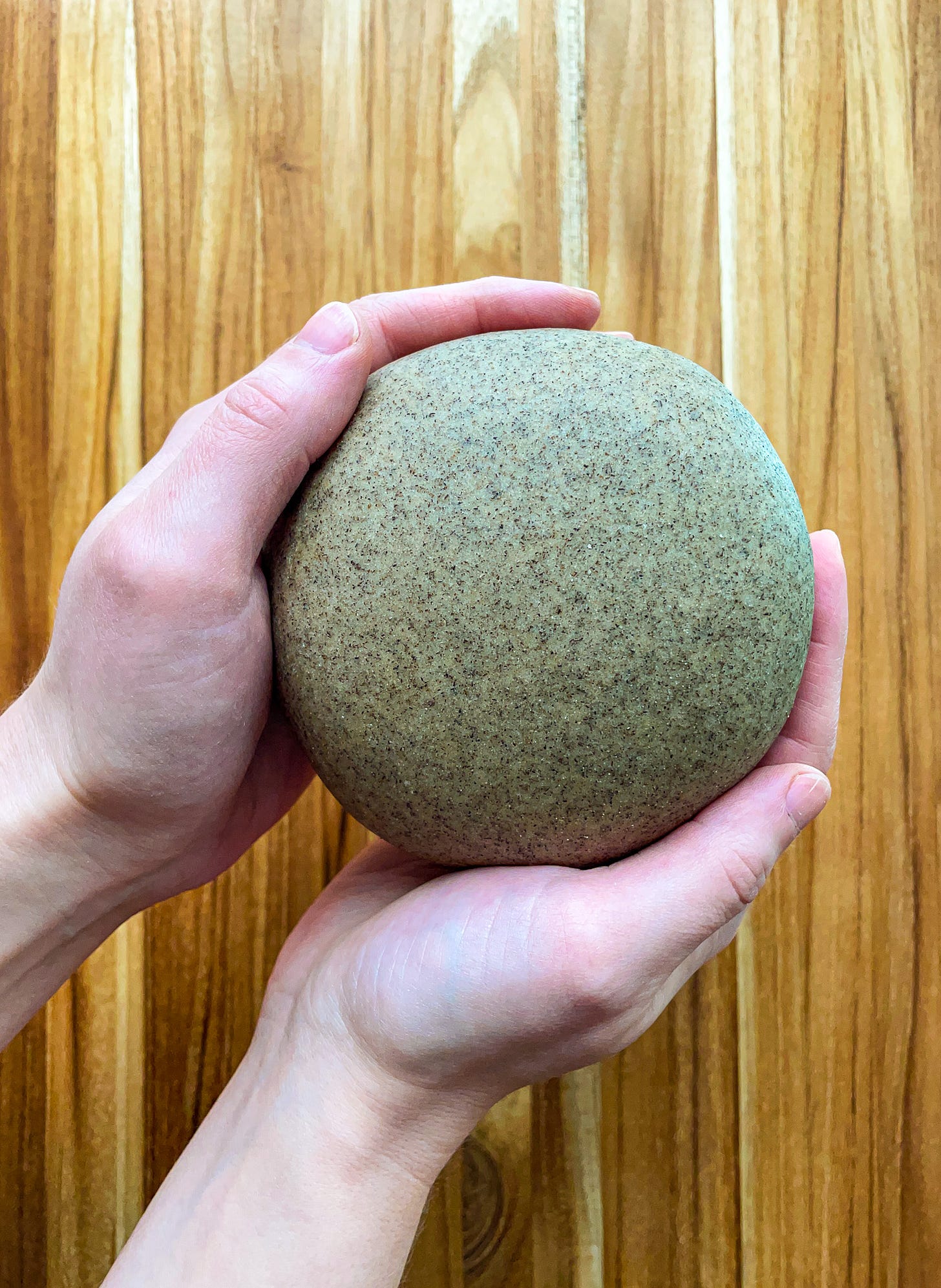In the mountains of Lombardy, many miles from Milan but just south of the Swiss border, you’ll be hard-pressed to find much pasta.
Here, rice and polenta reign, as do hearty cold-weather dishes laced with pork, butter, and cheese. But if you do happen upon some pasta, it might be a dish called pizzoccheri: short buckwheat noodles served with potatoes, cabbage, and a melty Alpine cheese called Valtellina Casera. In other words: Good, stick-to-your-ribs mountain food built on cheap staples and local ingredients.
Hop only a couple of countries eastward and you’re suddenly in Hungary, the center of Europe and home to many of my ancestors before they made their way to Ellis Island in 1921. Although at first it might seem like Italy and Hungary have little in common, I’d wager their cuisines are, in part, more alike than not, with meat stews and robust vegetables at their core. In Hungary, you’ll also find a dish called káposztás tészta (or haluski, with a dozen other names and origins), comforting wide noodles tossed with cabbage fried in lots and lots of butter.
Oddly enough, my first introduction to Hungarian cabbage pasta wasn’t by my once-Hungarian family, but by Pasta Grannies. (New to them? Click here for my post all about this gem of the Internet.) And perhaps even stranger was the episode didn’t feature a granny at all, but Hershey Felder, a Canadian pianist and actor living in Italy who has yet to hit 60. Granny or no granny, the video caught my attention as Felder simultaneously prepared a squash lasagna and fried cabbage tagliatelle as an homage to his own Hungarian ancestors. Maybe it was the sound of an eyewatering amount of sizzling butter, but I haven’t forgotten the dish more than a year later.
Which brings us to today’s recipe, inspired both by pizzoccheri and káposztás tészta with a few personal touches—fennel seeds, dill, and sour cream—that I’d like to think would make my Jewish great-great grandparents proud.
A few notes about buckwheat flour
Perhaps most famously associated with Japanese soba noodles, buckwheat flour is naturally gluten-free, which means it makes for a far more delicate pasta dough. In my initial test of this recipe, I used a greater proportion of buckwheat to ‘00’ flour, but ultimately I found the texture unpleasantly grainy. The cooked noodles were also extremely brittle, and my once lovely pappardelle quickly broke apart with every toss. I’ve adjusted the recipe and technique so you get the color and character of the buckwheat but a sturdier, chewier noodle that doesn’t easily tear. Of course, feel free to omit the buckwheat flour entirely and make my standard egg pasta dough, or use dried egg noodles.
Two more notes: Buckwheat flour soaks up moisture readily, so keep some extra water nearby when making your dough. And, in general, always cut a naturally gluten-free flour like buckwheat (or chestnut, chickpea, and lentil flour) with ‘00’ (or all-purpose) flour or semolina flour, depending on the type of pasta you’re making, for easier shaping and a more traditional texture.
Buckwheat Pasta with Buttery Fried Cabbage & Dill
Serves 4





